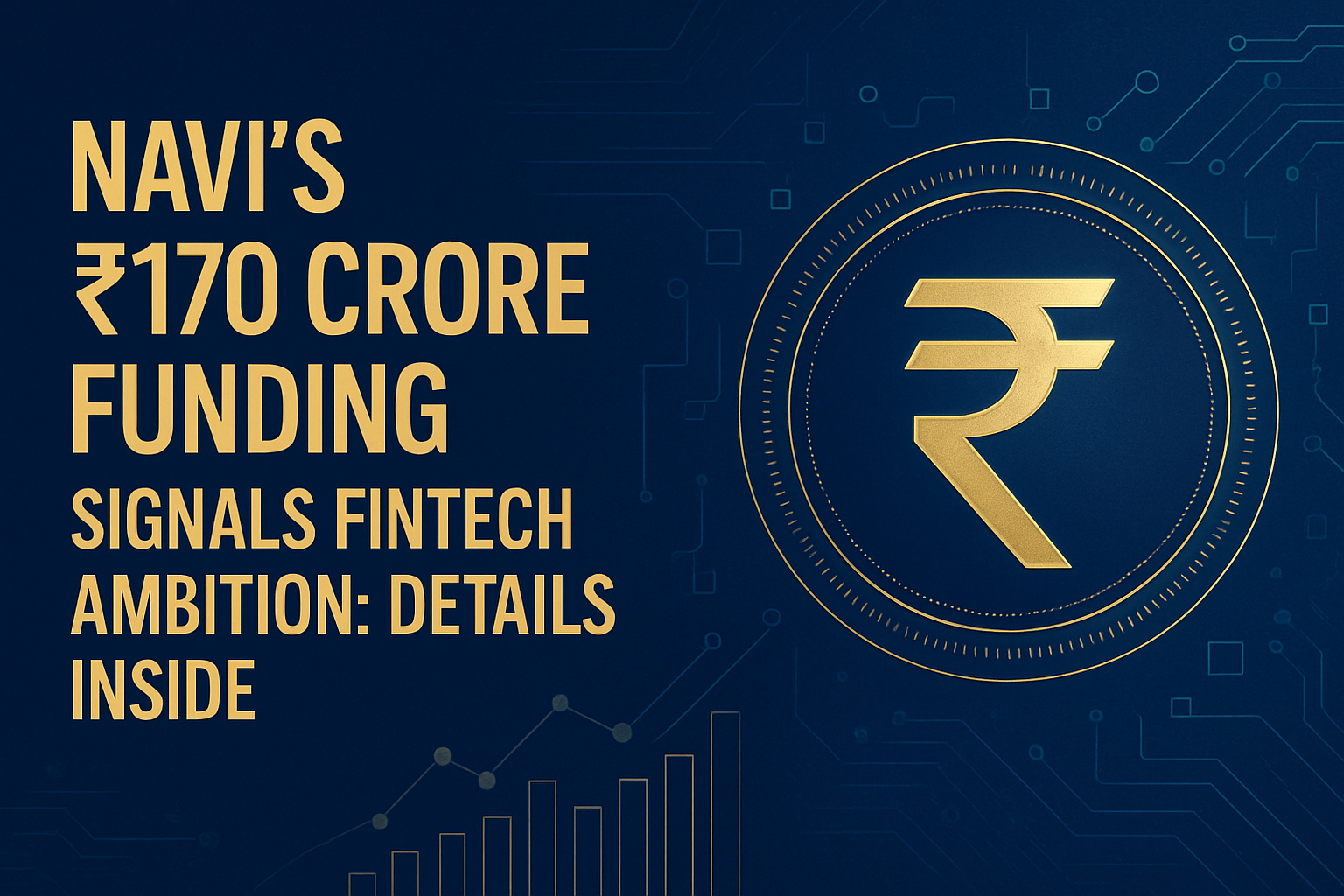In July 2025, Navi Technologies announced that it raised ₹170 crore through a debt financing round led by PhillipCapital, a global financial powerhouse, along with participation from other institutional investors. This wasn’t a typical equity-driven round but a strategic infusion of capital designed to expand Navi’s lending capacity and bolster its product pipeline. For fintech startups navigating regulatory scrutiny and margin pressures, this approach helps maintain founder control while ensuring liquidity for growth.
Why Debt Funding, Not Equity?
Sachin Bansal’s choice to pursue debt funding rather than an equity stake reveals much about Navi’s long-term strategy. Debt financing often signifies a company’s confidence in its existing revenue streams and its ability to repay without diluting ownership. For Navi, which has already established a strong foothold with personal and home loan products, this funding structure reflects operational maturity and a focus on scaling efficiently.
Understanding Navi’s Position in the Indian Fintech Arena
India’s fintech sector is vibrant but highly competitive, with players like Paytm, PhonePe, Cred, and others vying for user attention and regulatory goodwill. So, what sets Navi apart?
Founding Vision and Differentiation
-
Founder’s Legacy: Sachin Bansal’s reputation post-Flipkart is a magnet for investor trust and customer curiosity.
-
End-to-End Digital Experience: Unlike legacy banks, Navi’s platform operates end-to-end digitally, minimizing paperwork, automating risk assessment, and accelerating disbursal.
-
Affordability and Speed: Navi positions itself on the promise of lower interest rates, transparent processing, and ultra-fast approval—qualities that appeal to millennials and Gen-Z first-time borrowers.
-
Diverse Offerings: Beyond lending, Navi is increasingly spotted in the insurance, mutual funds, and micro-lending spaces, making it a full-stack fintech contender.
What Does This ₹170 Crore Mean for Navi?
This funding round is more than just a cash boost—it’s a signal to the market that Navi is in expansion mode and not afraid to scale aggressively. Here’s what they can achieve with this war chest:
1. Enhanced Lending Capabilities
Personal and home loans remain Navi’s flagship products. With fresh capital, they can underwrite larger ticket sizes, reach previously underserved segments, and potentially experiment with new lending categories like education and SME loans. The ability to tap into PhillipCapital’s network may also open doors for cross-border financial products or co-lending opportunities.
2. Technology Upgrades and AI-Driven Risk Tools
AI and machine learning are the new currency in digital finance. Navi has already invested heavily in robust scoring models to minimize defaults and identify creditworthy individuals quickly. With new funds earmarked for R&D, expect to see more sophisticated risk engines, personalized loan offerings, and automated compliance solutions.
3. Product Diversification and Insurance Leadership
Insurance is a largely underpenetrated market in India. Navi’s expansion into health and digital insurance, leveraging its data-driven DNA, sets the stage for innovative, affordable insurance plans targeting young, urban consumers. The new capital may be used for regulatory filings, product launches, and customer acquisition blitzes in the insurance vertical.
4. Brand Building and Market Penetration
While Navi enjoys strong recall thanks to Sachin Bansal’s association, fintech is all about trust. Aggressive marketing, digital campaigns, and partnerships with fintech aggregators or gig-economy platforms could follow, deepening its presence across Indian metros and Tier-II cities.
5. Preparation for Public Listing
Navi has long flirted with the idea of an IPO, and a strong balance sheet backed by diversified funding sources is vital. This fresh round of debt demonstrates prudent capital management and paints a compelling story to future retail and institutional investors.
The Broader Fintech Picture: Why This Move Matters
Investor Optimism in India’s Fintech
The Indian fintech market is projected to grow at a CAGR of over 22% in the next five years, with digital lending and insurtech among the fastest movers. Large-scale funding events, especially in a climate where global funding is under pressure, show that investors remain bullish on scalable, tech-first companies with clear leadership.
Competitive Responses
Whenever a prominent player like Navi makes a high-profile funding move, it forces incumbents—be it traditional banks or digital upstarts—to reexamine their strategies. Expect to see a new wave of product launches, aggressive loan offers, and strategic partnerships across the fintech ecosystem.
Challenges on the Road Ahead
No growth journey is without hurdles. Navi will contend with several industry-wide and unique challenges:
-
Regulatory Tightening: The RBI and SEBI have increased oversight on digital lending platforms. Strict KYC, audit trails, and robust governance frameworks are now non-negotiable.
-
Rising Customer Expectations: As more players compete on user experience, Navi must ensure its app remains intuitive, accessible in vernacular languages, and low on glitches.
-
Default Risks: Debt-fueled growth can be risky if credit assessments don’t keep pace. The economic aftershocks of the pandemic still linger, especially among informal sector borrowers.
-
Insurance Innovation: Penetrating the insurance market requires building trust, educating first-time buyers, and simplifying claims—stiff challenges but not insurmountable for a technology-first team.
What Market Leaders and Competitors Are Saying
Prominent commentators at Karo Startup, Indian Startup News, and YourStory have highlighted Navi’s careful but ambitious approach. Many point out that leveraging debt for structured growth is a sign that Indian fintech startups are maturing—moving from early-stage risk-taking to long-term value creation. Others believe Navi’s blend of leadership, tech, and capital efficiency could make it a role model for aspiring fintech founders.
Expert Opinions: The Next Big Leap
Industry insiders suggest that Navi’s debt funding may be a precursor to strategic acquisitions—possibly in insurance or investments—or readiness to accelerate toward an IPO. There’s broad consensus that any move by Sachin Bansal merits attention, as he’s demonstrated an ability to spot sectoral inflection points before the crowd.
Teaser: What’s Next for Navi?
With a fortified balance sheet and steady market momentum, Navi is primed for ambitious product launches and market expansion. Watch for announcements around new insurance products, forays into regional lending, or even tie-ups with global fintech players vying for a share of India’s digital finance gold rush.
For observers and participants in the Indian startup world, Navi’s journey reflects the aspirations of a maturing fintech ecosystem—bold, innovation-driven, and always a step ahead in the race to reshape how India banks, borrows, and insures.
Navi’s ₹170 crore funding is more than a financial headline—it’s a harbinger of what’s to come in the country’s dynamic fintech sector. As the race heats up, platforms like Startup Gatha will continue bringing you the latest, most insightful updates on all the moves that matter in the Indian startup ecosystem.




